Food waste is a prevalent and important issue in Canada and across the globe. Recently Halton Environmental Network partnered with Value Chain Management International, in a revolutionary new study: Make Every Bite Count. The goal of the study was to understand the carbon ‘foodprint’ of household waste in Oakville and use that information to guide future programming to reduce our environmental impacts.
According to the study, 2.38 million metric tonnes of avoidable or potentially avoidable food waste occurs at the household level. Within the entire food chain, household food waste accounts for approximately 1/5 of all food loss and waste. It is a staggering figure considering nearly 7% of households in the Halton Region experience food insecurity (Make Every Bite Count, 2020).
Food waste comes at a cost to our environment, too. Food thrown in the trash instead of a composter contributes to a buildup of methane gas, a greenhouse gas. The leachate can also contaminate nearby water sources (Logan, 2019). The Make Every Bite Count study determined the average Oakville household food waste and loss was estimated to be 16,370 tonnes, which represents 43,035 metric tonnes of CO2 emissions.

Ways You Can Reduce Your Food Waste
Join our Food Waste Challenge!
October is Food Waste Month! Halton Environmental Network and Halton Food have teamed up and are challenging you to a seven-day zero waste challenge starting October 19th. We will be sharing food waste reduction tips, tricks, and facts all month long. Follow us on Instagram during the month of October to learn more.
Plan Your Meals
- If you know what you are making and can buy accordingly, you will avoid impulse buying food that may or may not get used.
- If you are trying to get your family to eat more fruits and vegetables, buy smaller quantities until you know they will be eaten, or buy fruits and vegetables that are recognizable. They may be delicious, but picky eaters may not appreciate purple carrots or blue potatoes, if they haven’t seen them before.
- Can you use the same food in multiple recipes? For example, potatoes are a versatile vegetable that can be used in soup, stews and on their own!

Organize Your Fridge
- Label leftovers with the date and consume with 2-3 days. Leftovers make great lunches or quick meals.
- Place older food at the front of the fridge, and newly bought food at the back, to minimize the chance of forgetting what you already have available.
- Learn about food storage, expiration dates and best before dates. Best before dates refers to food quality, not food safety.
- Many fruits, vegetables and meat products can be safely frozen. Did you know flour, butter and milk can be frozen too?
Store Food Properly
- Learn how to store food properly. Keep bananas, potatoes, onions, garlic, squashes, cucumber, and tomatoes out of the fridge, but in a cool, dry place. Keep apples, berries, greens, broccoli, cabbage, and carrots in the fridge. Lastly, keep avocados, peaches, pears, plums, and nectarines on the kitchen counter and store in the fridge when ripe.
- Cover leftovers and store above raw meats in the fridge to prevent contamination.

Salvage Food Scraps and Compost the Rest
- Use brown bananas in smoothies or make banana bread! Fruits and vegetables with blemishes and bruises may not look appealing but they are perfectly edible. As always, moldy, slimy and off-smelling fruits and vegetables should be composted, not consumed. When in doubt – compost it!
- No time to make banana bread or apple cake? Wash, chop and store ripe fruit in the freezer until you are ready to use it.
- Use the stems of broccoli or asparagus to make soup.
- Did you know that the skins of some fruits and vegetables contain more fibre than the actual fruit?
Enjoy unpeeled apples, potatoes, cucumbers!
5. Make your own vegetable broth using vegetable scraps, just make sure they are clean! Be creative with the food you have. Learn how to make substitutions or additions to recipes.
6. Start a home compost bin for egg shells, coffee grounds and other non-avoidable food wastes. Check out our video on composting and learn how to start a successful compost pile.
Read our Halton Food Volunteer Spotlight: Micheline Wheeler for more tips to reduce food wastage.
Food waste is a huge issue in Canada. Try keeping track of what you actually waste, to see what you waste, and then take our challenge and see how much food waste you can reduce in your household. Food insecurity is a major issue for millions of people; don’t waste a precious resource like food. Let’s respect ourselves, each other and the planet we live on.
What are you doing to reduce the amount of food wasted in your household? Do you have any tips and tricks you would like to share? Email us at
Contributed by Helen Stephenson – Oakville Community Garden Coordinator
References:
Halton Environmental Network et al. 2020. Make Every Bite Count: Study to Estimate the Greenhouse Gas Footprint of Household Food Waste in Oakville. [Online]. Available: https://haltonenvironet.ca/wp-content/uploads/2020/09/VCMI_Report_Final.pdf [8, Oct. 2020].
Logan, Taylor. (2019). The problem with Ontario’s plan to ban food waste from landfills. [Online]. Available: https://www.cbc.ca/news/technology/landfill-ban-organics-ontario-1.5282881
TipMine. 2020. [Online]. Available: https://www.tipmine.com/tips/tips-on-refrigerator-organization

